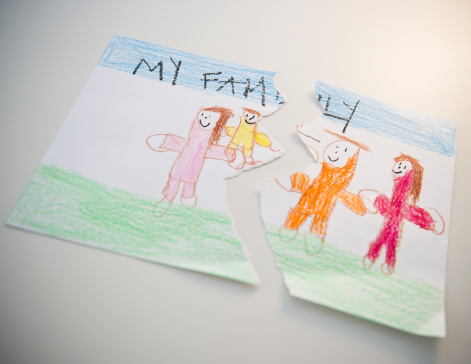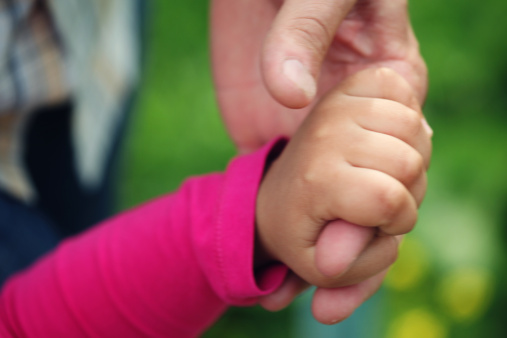
Understanding the difference between interests and positions could make all of the difference in helping you negotiate a better outcome in your divorce.
Position-Based Bargaining: Most people have a tendency to negotiate by arguing in favor of their
positions. In divorce, this type of “position-based” bargaining can actually make it more difficult to get what you want. Once you and your spouse become locked into positions, the need to defend those positions can lead to a lengthy and expensive divorce. Often position based negotiations come to an end only after both parties have reached a point of physical and emotional exhaustion only to reach a “meet in the middle” agreement. One of the many problems with meeting in “the middle” is that the best solutions may have existed outside of either position. Creative negotiation that avoid
positions and focus on
interests can lead to outcomes that are better for both parties.
Interest-Based Bargaining: In divorce, couples start by determining their interests and look for true “win/win” scenarios. In order to appreciate how interest-based bargaining works, it is important to understand the difference between positions and interests.
Positions are narrow; “win/lose” proposals can only be satisfied in one way. For example, statements such as “I want Sole custody” or “I need $5,000 per month in support” or “I must have the house” represent positions that require the other person to “lose” in order for you to win. On the other hand, “interests” (sometimes called goals) focus on big picture desires that can be satisfied in many ways. Statements such as “I want our children to be kept out of the conflict” or “I want financial stability for both homes” or “I want us to be able to communicate better in our co-parenting” are requests to have an important
interest met.
One of the advantages of focusing on big-picture interests is that you and your spouse are likely to have many of these interests in common. Therefore, although working on the details of how these interests can be met will still require some problem solving skills (and some bargaining) the negotiation becomes easier because you are both working toward these important common goals.
Interest-based bargaining is a skill that needs to be developed over time. Divorce negotiations are usually improved when the professionals involved have significant training and experience in this method so that they can teach these skills to their clients. Most mediators and Collaborative professionals have training and experience in interest based bargaining. To locate a professional who understands this method to interview and to learn more about interest based divorce negotiation go to
www.collaborativelaw.org or www.divorcechoice.com.
 What can an orange possibly help us with in our collaborative divorce or any divorce process for that matter? You may have heard about interest based negotiations vs. position based negotiations. When I am working as a financial neutral or mediator with divorcing couples, I use an orange to demonstrate these two different approaches.
I place an orange on the table and then say to the couple; here we have one orange for the two of you. How are you going to decide who gets the orange? Most people will say cut it in half. While this certainly works, it may not be the best approach. Here is why.
I then tell them each why they want the orange. One wants it to eat because they are hungry. The other wants the orange peel for baking. Now if we were to cut it in half as most people will say they both only get half of what they need. It is only when they state why the orange is important to them that an agreement can be reached.
When negotiating divorce issues think of the orange and remember to talk about your interests instead of locking into a position. The quicker you get to the interests you will be that much closer to an agreement. Not only is emotion and conflict minimized you also get more of what you need/want. Think orange.
What can an orange possibly help us with in our collaborative divorce or any divorce process for that matter? You may have heard about interest based negotiations vs. position based negotiations. When I am working as a financial neutral or mediator with divorcing couples, I use an orange to demonstrate these two different approaches.
I place an orange on the table and then say to the couple; here we have one orange for the two of you. How are you going to decide who gets the orange? Most people will say cut it in half. While this certainly works, it may not be the best approach. Here is why.
I then tell them each why they want the orange. One wants it to eat because they are hungry. The other wants the orange peel for baking. Now if we were to cut it in half as most people will say they both only get half of what they need. It is only when they state why the orange is important to them that an agreement can be reached.
When negotiating divorce issues think of the orange and remember to talk about your interests instead of locking into a position. The quicker you get to the interests you will be that much closer to an agreement. Not only is emotion and conflict minimized you also get more of what you need/want. Think orange.  What can an orange possibly help us with in our collaborative divorce or any divorce process for that matter? You may have heard about interest based negotiations vs. position based negotiations. When I am working as a financial neutral or mediator with divorcing couples, I use an orange to demonstrate these two different approaches.
I place an orange on the table and then say to the couple; here we have one orange for the two of you. How are you going to decide who gets the orange? Most people will say cut it in half. While this certainly works, it may not be the best approach. Here is why.
I then tell them each why they want the orange. One wants it to eat because they are hungry. The other wants the orange peel for baking. Now if we were to cut it in half as most people will say they both only get half of what they need. It is only when they state why the orange is important to them that an agreement can be reached.
When negotiating divorce issues think of the orange and remember to talk about your interests instead of locking into a position. The quicker you get to the interests you will be that much closer to an agreement. Not only is emotion and conflict minimized you also get more of what you need/want. Think orange.
What can an orange possibly help us with in our collaborative divorce or any divorce process for that matter? You may have heard about interest based negotiations vs. position based negotiations. When I am working as a financial neutral or mediator with divorcing couples, I use an orange to demonstrate these two different approaches.
I place an orange on the table and then say to the couple; here we have one orange for the two of you. How are you going to decide who gets the orange? Most people will say cut it in half. While this certainly works, it may not be the best approach. Here is why.
I then tell them each why they want the orange. One wants it to eat because they are hungry. The other wants the orange peel for baking. Now if we were to cut it in half as most people will say they both only get half of what they need. It is only when they state why the orange is important to them that an agreement can be reached.
When negotiating divorce issues think of the orange and remember to talk about your interests instead of locking into a position. The quicker you get to the interests you will be that much closer to an agreement. Not only is emotion and conflict minimized you also get more of what you need/want. Think orange. 

 A strategy used by some divorcing spouses and their attorneys is to threaten that they will take the other spouse to court. Threatening court is a negotiation strategy in an effort to get the other side to give up or significantly compromise their position(s).
When attorneys use this tactic, they often will prepare for a trial. The trial preparation ends up being extremely expensive and emotionally exhausting for the involved spouses. Often a hatred for the other spouse develops because of trials and/or the threatened use of court.
The reality is a small fraction of divorces end up in trial. The overwhelming reason those cases do end up in trial is because spouses and their attorneys refuse to negotiate. Sometimes a spouse will tell their attorney to go for the throat or they say I want to make him/her pay. It is the divorcing spouses and unfortunately their children, if any, that end up paying the price financially and emotionally. Seeking revenge does not have a place in any divorce process and accompanied by an unwillingness to negotiate in good faith sets up a strategy to fail.
A strategy used by some divorcing spouses and their attorneys is to threaten that they will take the other spouse to court. Threatening court is a negotiation strategy in an effort to get the other side to give up or significantly compromise their position(s).
When attorneys use this tactic, they often will prepare for a trial. The trial preparation ends up being extremely expensive and emotionally exhausting for the involved spouses. Often a hatred for the other spouse develops because of trials and/or the threatened use of court.
The reality is a small fraction of divorces end up in trial. The overwhelming reason those cases do end up in trial is because spouses and their attorneys refuse to negotiate. Sometimes a spouse will tell their attorney to go for the throat or they say I want to make him/her pay. It is the divorcing spouses and unfortunately their children, if any, that end up paying the price financially and emotionally. Seeking revenge does not have a place in any divorce process and accompanied by an unwillingness to negotiate in good faith sets up a strategy to fail.
 Understanding the difference between interests and positions could make all of the difference in helping you negotiate a better outcome in your divorce.
Position-Based Bargaining: Most people have a tendency to negotiate by arguing in favor of their positions. In divorce, this type of “position-based” bargaining can actually make it more difficult to get what you want. Once you and your spouse become locked into positions, the need to defend those positions can lead to a lengthy and expensive divorce. Often position based negotiations come to an end only after both parties have reached a point of physical and emotional exhaustion only to reach a “meet in the middle” agreement. One of the many problems with meeting in “the middle” is that the best solutions may have existed outside of either position. Creative negotiation that avoid positions and focus on interests can lead to outcomes that are better for both parties.
Interest-Based Bargaining: In divorce, couples start by determining their interests and look for true “win/win” scenarios. In order to appreciate how interest-based bargaining works, it is important to understand the difference between positions and interests.
Positions are narrow; “win/lose” proposals can only be satisfied in one way. For example, statements such as “I want Sole custody” or “I need $5,000 per month in support” or “I must have the house” represent positions that require the other person to “lose” in order for you to win. On the other hand, “interests” (sometimes called goals) focus on big picture desires that can be satisfied in many ways. Statements such as “I want our children to be kept out of the conflict” or “I want financial stability for both homes” or “I want us to be able to communicate better in our co-parenting” are requests to have an important interest met.
One of the advantages of focusing on big-picture interests is that you and your spouse are likely to have many of these interests in common. Therefore, although working on the details of how these interests can be met will still require some problem solving skills (and some bargaining) the negotiation becomes easier because you are both working toward these important common goals.
Interest-based bargaining is a skill that needs to be developed over time. Divorce negotiations are usually improved when the professionals involved have significant training and experience in this method so that they can teach these skills to their clients. Most mediators and Collaborative professionals have training and experience in interest based bargaining. To locate a professional who understands this method to interview and to learn more about interest based divorce negotiation go to
Understanding the difference between interests and positions could make all of the difference in helping you negotiate a better outcome in your divorce.
Position-Based Bargaining: Most people have a tendency to negotiate by arguing in favor of their positions. In divorce, this type of “position-based” bargaining can actually make it more difficult to get what you want. Once you and your spouse become locked into positions, the need to defend those positions can lead to a lengthy and expensive divorce. Often position based negotiations come to an end only after both parties have reached a point of physical and emotional exhaustion only to reach a “meet in the middle” agreement. One of the many problems with meeting in “the middle” is that the best solutions may have existed outside of either position. Creative negotiation that avoid positions and focus on interests can lead to outcomes that are better for both parties.
Interest-Based Bargaining: In divorce, couples start by determining their interests and look for true “win/win” scenarios. In order to appreciate how interest-based bargaining works, it is important to understand the difference between positions and interests.
Positions are narrow; “win/lose” proposals can only be satisfied in one way. For example, statements such as “I want Sole custody” or “I need $5,000 per month in support” or “I must have the house” represent positions that require the other person to “lose” in order for you to win. On the other hand, “interests” (sometimes called goals) focus on big picture desires that can be satisfied in many ways. Statements such as “I want our children to be kept out of the conflict” or “I want financial stability for both homes” or “I want us to be able to communicate better in our co-parenting” are requests to have an important interest met.
One of the advantages of focusing on big-picture interests is that you and your spouse are likely to have many of these interests in common. Therefore, although working on the details of how these interests can be met will still require some problem solving skills (and some bargaining) the negotiation becomes easier because you are both working toward these important common goals.
Interest-based bargaining is a skill that needs to be developed over time. Divorce negotiations are usually improved when the professionals involved have significant training and experience in this method so that they can teach these skills to their clients. Most mediators and Collaborative professionals have training and experience in interest based bargaining. To locate a professional who understands this method to interview and to learn more about interest based divorce negotiation go to 



